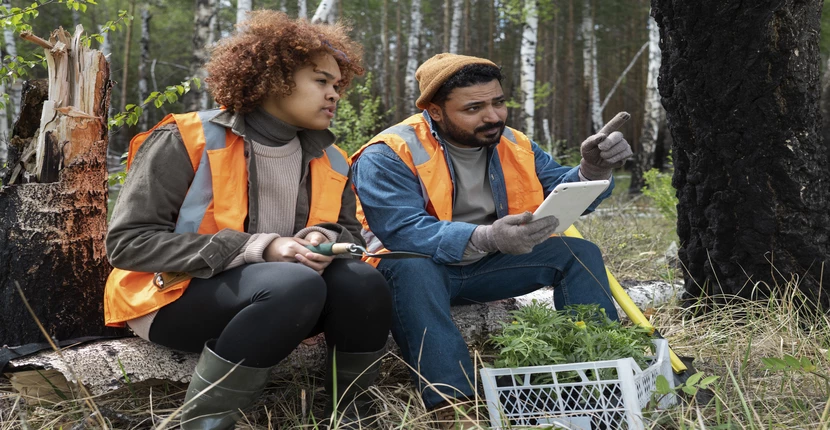
Phase 1 Habitat Survey in Barton-upon-Humber
Request a free quote for expert phase 1 habitat assessments todayAt Invasive Weed, we specialise in Phase 1 Habitat Surveys in Barton-upon-Humber to support planning applications, land development, and conservation projects while ensuring compliance with UK wildlife protection laws.
A phase 1 habitat survey is the first step in identifying habitat types, assessing ecological constraints, and determining the potential presence of protected species in Barton-upon-Humber. This survey is a key requirement for developers, landowners, and planning authorities to ensure that projects proceed responsibly and in accordance with environmental regulations.
Our team of qualified ecologists conducts thorough habitat mapping, flora and fauna assessments, and species potential evaluations to provide detailed ecological insights.
For a phase 1 habitat survey in Barton-upon-Humber and across the UK, contact us today for a consultation.
What Is the Phase 1 Habitat Survey Process?
The phase 1 habitat survey process begins with an initial consultation & desktop study, where existing ecological and environmental data is reviewed to understand the site’s ecological history and nearby protected areas.
The next step is the on-site field survey, during which ecologists conduct walkover assessments, document habitat classifications, and identify any potential ecological constraints. Following this, the data collection & mapping stage involves creating detailed habitat maps that illustrate the extent and distribution of habitat types across the site.
The final stage is the report & recommendations, where findings are compiled into a comprehensive ecological report, providing guidance for planning applications, potential ecological impacts, and further survey requirements.
What Does a Phase 1 Habitat Survey Include in Barton-upon-Humber?
A phase 1 habitat survey includes habitat mapping, biodiversity assessment, protected species evaluation, invasive species identification, and ecological recommendations in Barton-upon-Humber.
These surveys also include:
Site walkover & habitat mapping in Barton-upon-Humber – Identifies and categorises habitat types such as grasslands, woodlands, hedgerows, and wetlands.
Flora & fauna assessment in Barton-upon-Humber – Records plant and animal species to evaluate the site’s biodiversity value.
Protected species potential assessment in Barton-upon-Humber – Evaluates the likelihood of legally protected species such as bats, badgers, great crested newts, nesting birds, and reptiles being present.
Invasive species identification in Barton-upon-Humber – Checks for non-native and invasive plant species like Japanese Knotweed and Himalayan Balsam that may require specialist management.
Ecological constraints & recommendations in Barton-upon-Humber – Advises on further surveys or mitigation measures to ensure legal and environmental compliance.

How Much Does a Phase 1 Habitat Survey Cost in Barton-upon-Humber?
Phase 1 habitat survey costs range from £500 to £3,500+ in Barton-upon-Humber, depending on site size, complexity, and additional ecological requirements.
For small residential sites, costs typically range from £500 to £1,500 in Barton-upon-Humber, while larger commercial and industrial developments may require more detailed assessments, with costs between £1,500 and £3,500 in Barton-upon-Humber.
Additional expenses may arise if protected species surveys, follow-up assessments, or mitigation plans are needed, with prices varying based on the specific ecological requirements of the project.
Contact Invasive Weed in Barton-upon-Humber to get customised pricing for phase 1 habitat survey projects in targeted biodiversity.
Is a Permit Required for a Phase 1 Habitat Survey in Barton-upon-Humber?
A phase 1 habitat survey does not usually require a permit in Barton-upon-Humber, but further ecological surveys, such as protected species assessments, may require additional licensing.
In many cases, a phase 1 habitat survey is required under UK and international laws, such as the Wildlife and Countryside Act 1981 and the Habitats Regulations 2017 in Barton-upon-Humber, that require developers to assess and mitigate potential impacts on biodiversity before proceeding with construction.
Landowners and developers are responsible for ensuring full compliance with ecological regulations in Barton-upon-Humber, and failure to do so may result in planning delays, fines, or legal action.
How Long Does a Phase 1 Habitat Survey Take in Barton-upon-Humber?
A phase 1 habitat survey takes one to several weeks, depending on site size, complexity, and seasonal factors in Barton-upon-Humber.
For small sites, the survey can be completed within one to two weeks, while larger or more complex sites may take several weeks in Barton-upon-Humber to fully assess. The best time to conduct habitat surveys is during the growing season in Barton-upon-Humber (April to September), when plant species are most easily identifiable.
What Are the Environmental Considerations in a Phase 1 Habitat Survey in Barton-upon-Humber?
A phase 1 habitat survey approach focuses on minimising environmental impact in Barton-upon-Humber, incorporating mitigation strategies such as habitat restoration, ecological buffer zones, and wildlife-friendly development plans.
We also help developers comply with sustainability goals and environmental regulations in Barton-upon-Humber, ensuring that projects align with biodiversity net gain principles and contribute to long-term ecological resilience.
By integrating environmentally responsible strategies into site development, we support both conservation efforts and responsible land use.
Contact Invasive Weed in Barton-upon-Humber to get detailed information on the phase 1 habitat surveys in targeted biodiversity.
We cover Barton-upon-Humber (Lincolnshire)
